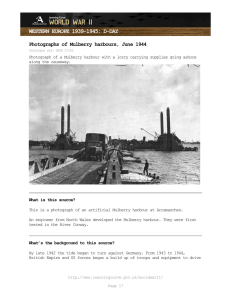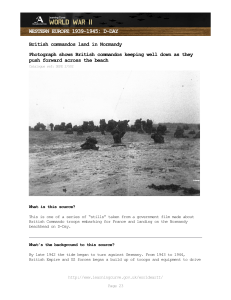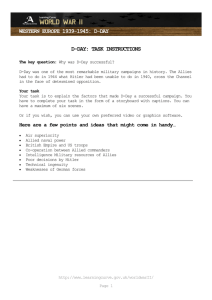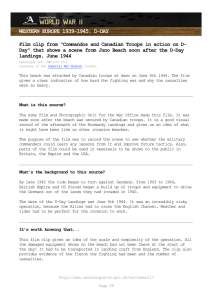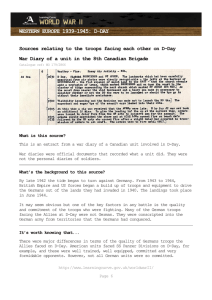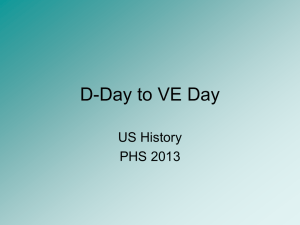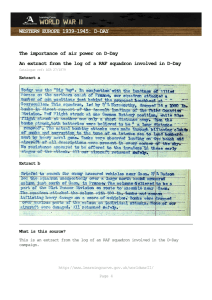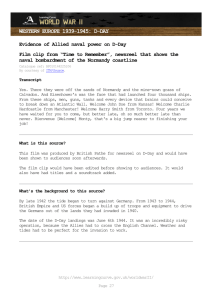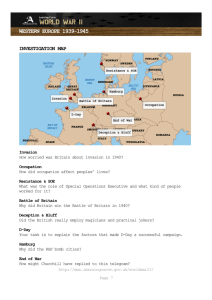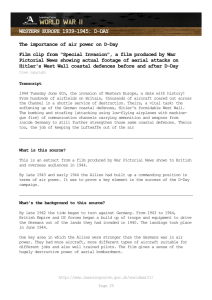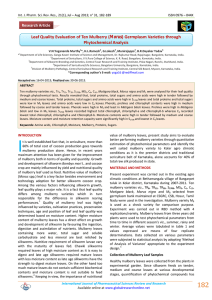WESTERN EUROPE 1939-1945: D-DAY Photographs of Mulberry harbours, June 1944
advertisement
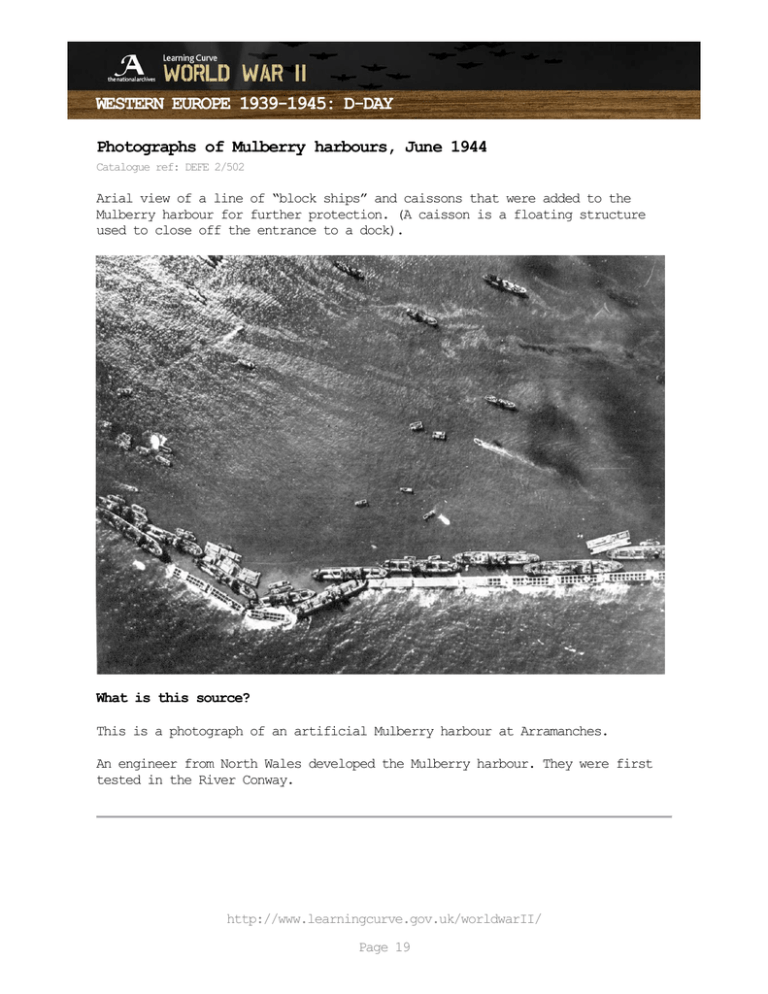
WESTERN EUROPE 1939-1945: D-DAY Photographs of Mulberry harbours, June 1944 Catalogue ref: DEFE 2/502 Arial view of a line of “block ships” and caissons that were added to the Mulberry harbour for further protection. (A caisson is a floating structure used to close off the entrance to a dock). What is this source? This is a photograph of an artificial Mulberry harbour at Arramanches. An engineer from North Wales developed the Mulberry harbour. They were first tested in the River Conway. http://www.learningcurve.gov.uk/worldwarII/ Page 19 WESTERN EUROPE 1939-1945: D-DAY What’s the background to this source? By late 1942 the tide began to turn against Germany. From 1943 to 1944, British Empire and US forces began a build up of troops and equipment to drive the Germans out of the lands they had invaded in 1940. The landings took place in June 1944. The Allied commanders were aware that they had to support their forces with more troops, supplies and equipment if their invasion was going to succeed. They also knew that the existing harbours would be held by the Germans and probably damaged in the fighting. As a result they came up with the idea of creating their own prefabricated harbours. These were made in Britain in sections and towed across the Channel and set down off the coast of Normandy. Once they were in place they were filled with water and became stable platforms to unload men and equipment from ships. It’s worth knowing that... One of the reasons why Hitler had not invaded Britain in 1940 was that he could not work out a way to keep his troops supplied once they had got ashore. The Allies came up with this solution to the problem. There were many other impressive pieces of technology and engineering. Another one was PLUTO, which stood for Pipe Line Under The Ocean. This pipeline supplied the Allies with their fuel for tanks and other vehicles. How does this source help us to understand why D-Day was successful? 1. How would you have supplied the D-Day troops with reinforcements and supplies without a Mulberry harbour? 2. How do you think the actions of the pilots helped the troops on the ground? 3. Is it possible to say whether the role of the engineers who designed and built devices like this was more or less important than the role of the other forces on D-Day? • • Will you include this source in your storyboard? If you do use it, what are the main points you will make in your caption? Use this framework to plan your storyboard. http://www.learningcurve.gov.uk/worldwarII/ Page 20
